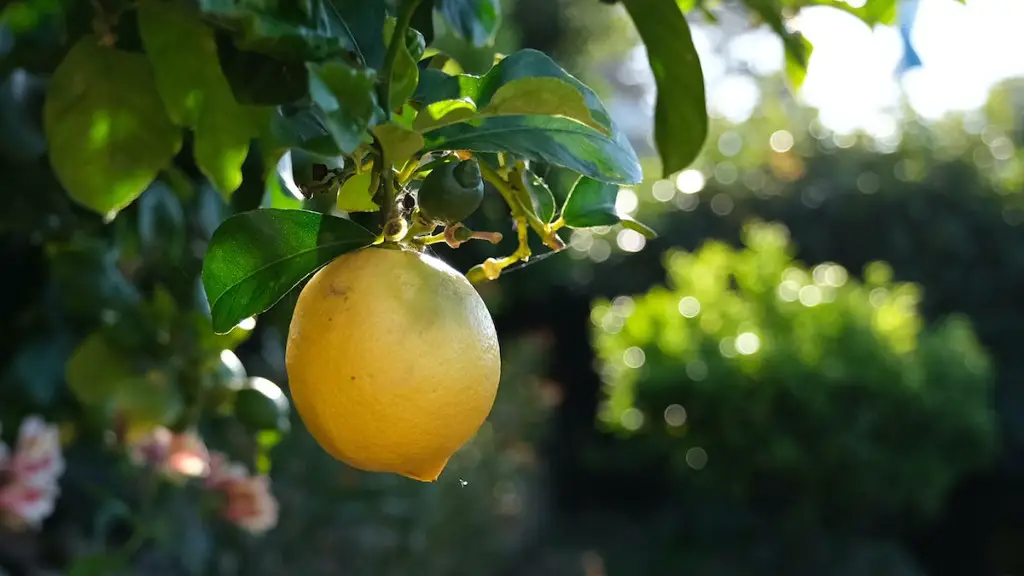How to Plant a Pygmy Palm Tree
Pygmy palm trees are small, tropical plants found in tropical climates around the world. These palm trees come in a variety of shapes and sizes and can grow up to 8 feet tall. They are popular landscape plants and can add a touch of tropical elegance to any garden or home. Planting one of these beautiful trees is a simple process that should not take more than a few hours if done properly.
In order to plant a pygmy palm tree properly, you will need a few supplies. These include a pot or container with well-draining soil, a container filled with equal parts sand and peat moss, a digging tool, and a slow-release fertilizer. Before planting, it is important to prepare the soil. You can do this by mixing the sand and peat moss in the container and then adding a slow-release fertilizer. You will then need to dig a hole that is slightly larger than the pot you are going to use.
Once the hole is prepared, you can place the pot or container with the soil inside. Make sure to firmly press the soil down with your hands or a shovel. You will then need to carefully place the palm tree into the hole. Make sure the roots are spread out and that the palm tree is firmly planted in the container. Finally, you can add a layer of mulch around the base of the tree. This will help to retain moisture and discourage weed growth.
Once the pygmy palm tree is planted, you will need to make sure it gets plenty of water. A good rule of thumb is to give the tree about an inch of water every week. You can also fertilize the tree a few weeks after planting. Be sure to use a fertilizer made for palm trees and follow the instructions on the product.
When it comes to caring for a pygmy palm tree, it is important to remember a few things. The tree should be pruned regularly in order to promote healthy growth. It is also important to keep these trees away from any areas where salt or chemicals may be present in the air or soil. Finally, it is important to inspect the tree regularly for signs of insects or disease.
Planting a pygmy palm tree is a simple but rewarding process. With the right supplies and knowledge, anyone can grow one of these beautiful and tropical trees. They will add a touch of elegance to any home or garden and with regular care and maintenance they can last for many years.
Pygmy Palm Tree Watering Requirements
One of the most important things to remember when growing a pygmy palm tree is to provide it with adequate amounts of water. It is essential to water the tree at least once a week and to make sure to moisten the soil to at least a few inches below the surface. Depending on the climate, it may be necessary to water the tree more often. Additionally, during periods of extreme heat or prolonged drought, the tree may need to be watered more frequently.
If the tree is not receiving adequate water, it may be more prone to developing dry tips or the fronds may start to turn yellow. It is important to monitor the amount of water being given to the tree and adjust according to the weather and soil conditions. Furthermore, during the summer months, it is important to mist the tree regularly to help cool it down and increase humidity.
Finally, when watering the tree it is important to not over-water it. This can cause root rot, which can be very difficult to remediate. It is best to water the tree deeply and thoroughly, but avoid over-saturating the soil. If in doubt, it is better to underwater the tree rather than overwater it.
Pygmy Palm Tree Pruning Requirements
Pruning a pygmy palm tree is very important in order to ensure its health and vigor. Pruning helps to keep the tree in shape and promotes air circulation which is essential for healthy growth. Pruning should be done regularly and is best done at the end of winter when the growth period is ending.
When pruning a pygmy palm tree, it is important to cut off any dead or damaged fronds as well as any fronds that are crossing over each other or that are too close to the trunk. The best way to do this is to use a pair of sharp garden shears for a neat cut. Be sure to wear protective gloves when handling the shears.
It is also important to avoid cutting too much of the tree when pruning. If too much is cut off, it can cause stress and damage to the tree. Additionally, it is best to leave some of the dead fronds on the tree until the new fronds have grown in. This will help protect the tree from the elements and also encourage airflow in the canopy.
Pygmy Palm Tree Fertilizer Requirements
Fertilizing a pygmy palm tree is very important in order to ensure its optimum health and growth. Fertilizing helps to replenish the soil with essential nutrients that the tree needs in order to grow. The best time to fertilize a pygmy palm tree is during the spring season when its growth period is beginning.
When fertilizing, it is important to use a fertilizer made specifically for palm trees. These fertilizers are typically high in nitrogen and contain micronutrients such as magnesium and iron. Additionally, the fertilizer should be slow release, so that the nutrients can be absorbed by the tree slowly over the course of several weeks.
It is also important to only apply the fertilizer when the soil is moist. When applying the fertilizer, it is best to use a spreader to get an even distribution. Additionally, it is important to not over-fertilize the tree as this can cause damage to the roots and the leaves. The best rule of thumb is to only apply the fertilizer once every 3 to 4 months.
Pygmy Palm Tree Disease Prevention and Care
Disease prevention is an important part of caring for a pygmy palm tree. There are several diseases and pests that can affect pygmy palm trees and it is important to be aware of them. Common pests that can affect pygmy palm trees are scale insects, mealybugs, and beetles.
In order to avoid disease or pest infestation, it is important to inspect the tree regularly. For example, inspect the tree for any brown spots or yellowing leaves. Additionally, check for any signs of pests such as webs or tiny insects. If any of these are present, it is important to act quickly to prevent the problem from spreading.
It is also important to make sure that the tree is planted in an area with proper drainage and protection from the elements. Additionally, it is important to provide the tree with adequate amounts of water and sunlight. Be sure to prune the tree regularly in order to remove any dead or damaged fronds and to encourage healthy growth.
Final Thoughts on Planting and Caring for a Pygmy Palm Tree
Planting and caring for a pygmy palm tree is a relatively simple process with some important steps. Make sure to provide the tree with plenty of water and fertilizer, as well as prune it regularly in order to promote healthy growth. Additionally, inspect the tree regularly for any signs of disease or pests. Finally, make sure to plant the tree in an area with adequate drainage and protection from the elements.
With proper care and maintenance, a pygmy palm tree can last for many years and will bring a touch of tropical elegance to any home or garden.




